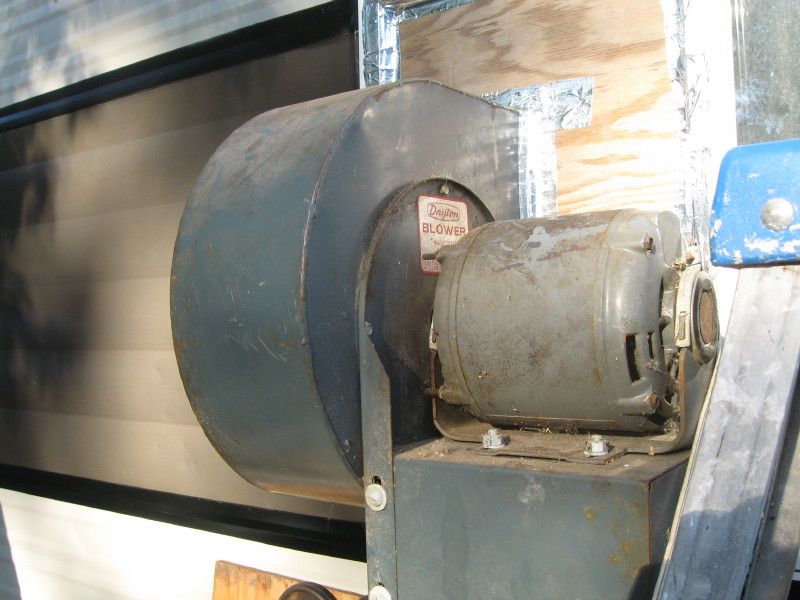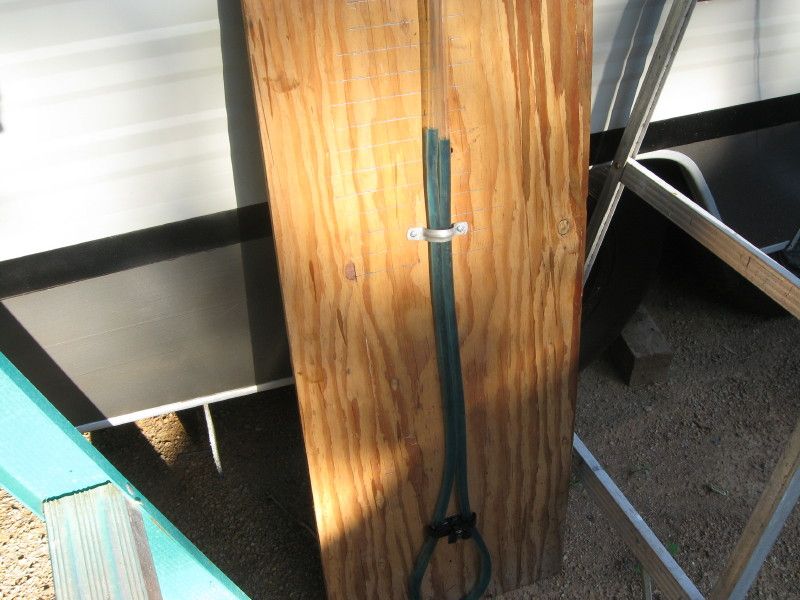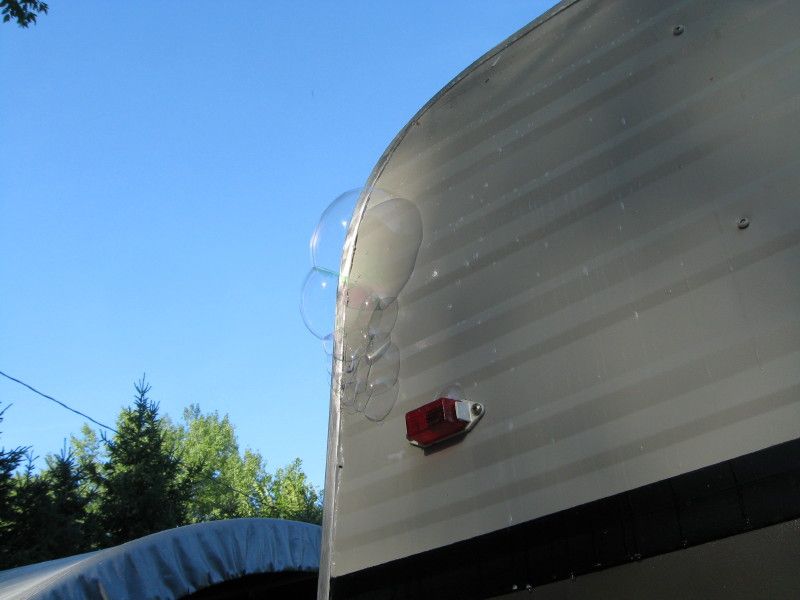Togger
Mar 14, 2015Explorer
DIY Pressure Testing for Rain Leaks
I have an impossible to find leak in my travel trailer and I am at my wits end. My trailer is a 40 ft. Park model on a permanent campsite in southern Delaware with a hard room and deck attached so I do not have the option to take it in to a dealer to have a Seal Tech leak check performed.
I am determined to take matters into my own hands and figure out how to do my own pressure test on site. After searching various posts from the past, this is my basic plan.
I am going to purchase a high CFM air moving device, probably a carpet dryer, and rig it up to blow air through the side storage hatch door which is under the bed in the bedroom. I will lift the bed so the air can enter and pressurize the entire camper. To achieve a tight camper I will tape off the sink drains, shower drain, kitchen exhaust, and any roof vents.
Using cardboard and duct tape I will seal the carpet dryer fan into the camper hatch. I will insert a 1/2 inch clear plastic tube through the cardboard so it runs from the inside to the outside. On the outside this tube will be taped to the camper in a U-shape about 1 ft. High to serve as a homemade manometer to detect air pressure. I will pour water into this tube enough to fill the bottom few inches of the tube.
When I start the fan I will know I have achieved positive pressure on the inside of the camper if the water levels become uneven on the two sides of the plastic tube at the bottom of the U. Adequate pressure should range from 1/4 to 1" difference in water height between the two sides.
I don't want to damage the camper with too much pressure so I i will start the fan with a door cracked and then slowly close the door while checking that I don't get over 1" pressure in the manometer.
Once I have achieved pressurization, I will spray all possible leak areas on the outside with a strong solution of dish soap and water in a pump-up sprayer. I expect to see bubbles forming anywhere air is escaping and this is the exact spot water could be entering. I will mark any bubbling areas, repair them, and then re-check afterwards to make sure they are sealed.
I am looking for advice from anyone who has done this type of test. Here are my questions:
1. How much CFM of air will I need to get adequate pressure. I am looking at purchasing a powerful carpet dryer this settings from 2500 to 4200 CFM. I figure if overpowered I can simply reduce pressure by cracking a window or door. If I am underpowered I am setting myself up for failure. Keep in mind this is a 40 ft. Trailer.
2. I am planning to do the test with 2 large slide-outs in the open position. Would the air seal be better in the closed position? I will be testing prior to campground turning on electric for the season so will use a generator for power and may have trouble if I need to close the slides.
3. Do I need to open something to allow air pressure to build between the trailer ceiling and trailer roof. If so, they would also need to do this when performing a Seal Test pressure test.
4. Is there anything I have wrong or am missing?
All advice appreciated! Thanks!
I am determined to take matters into my own hands and figure out how to do my own pressure test on site. After searching various posts from the past, this is my basic plan.
I am going to purchase a high CFM air moving device, probably a carpet dryer, and rig it up to blow air through the side storage hatch door which is under the bed in the bedroom. I will lift the bed so the air can enter and pressurize the entire camper. To achieve a tight camper I will tape off the sink drains, shower drain, kitchen exhaust, and any roof vents.
Using cardboard and duct tape I will seal the carpet dryer fan into the camper hatch. I will insert a 1/2 inch clear plastic tube through the cardboard so it runs from the inside to the outside. On the outside this tube will be taped to the camper in a U-shape about 1 ft. High to serve as a homemade manometer to detect air pressure. I will pour water into this tube enough to fill the bottom few inches of the tube.
When I start the fan I will know I have achieved positive pressure on the inside of the camper if the water levels become uneven on the two sides of the plastic tube at the bottom of the U. Adequate pressure should range from 1/4 to 1" difference in water height between the two sides.
I don't want to damage the camper with too much pressure so I i will start the fan with a door cracked and then slowly close the door while checking that I don't get over 1" pressure in the manometer.
Once I have achieved pressurization, I will spray all possible leak areas on the outside with a strong solution of dish soap and water in a pump-up sprayer. I expect to see bubbles forming anywhere air is escaping and this is the exact spot water could be entering. I will mark any bubbling areas, repair them, and then re-check afterwards to make sure they are sealed.
I am looking for advice from anyone who has done this type of test. Here are my questions:
1. How much CFM of air will I need to get adequate pressure. I am looking at purchasing a powerful carpet dryer this settings from 2500 to 4200 CFM. I figure if overpowered I can simply reduce pressure by cracking a window or door. If I am underpowered I am setting myself up for failure. Keep in mind this is a 40 ft. Trailer.
2. I am planning to do the test with 2 large slide-outs in the open position. Would the air seal be better in the closed position? I will be testing prior to campground turning on electric for the season so will use a generator for power and may have trouble if I need to close the slides.
3. Do I need to open something to allow air pressure to build between the trailer ceiling and trailer roof. If so, they would also need to do this when performing a Seal Test pressure test.
4. Is there anything I have wrong or am missing?
All advice appreciated! Thanks!


